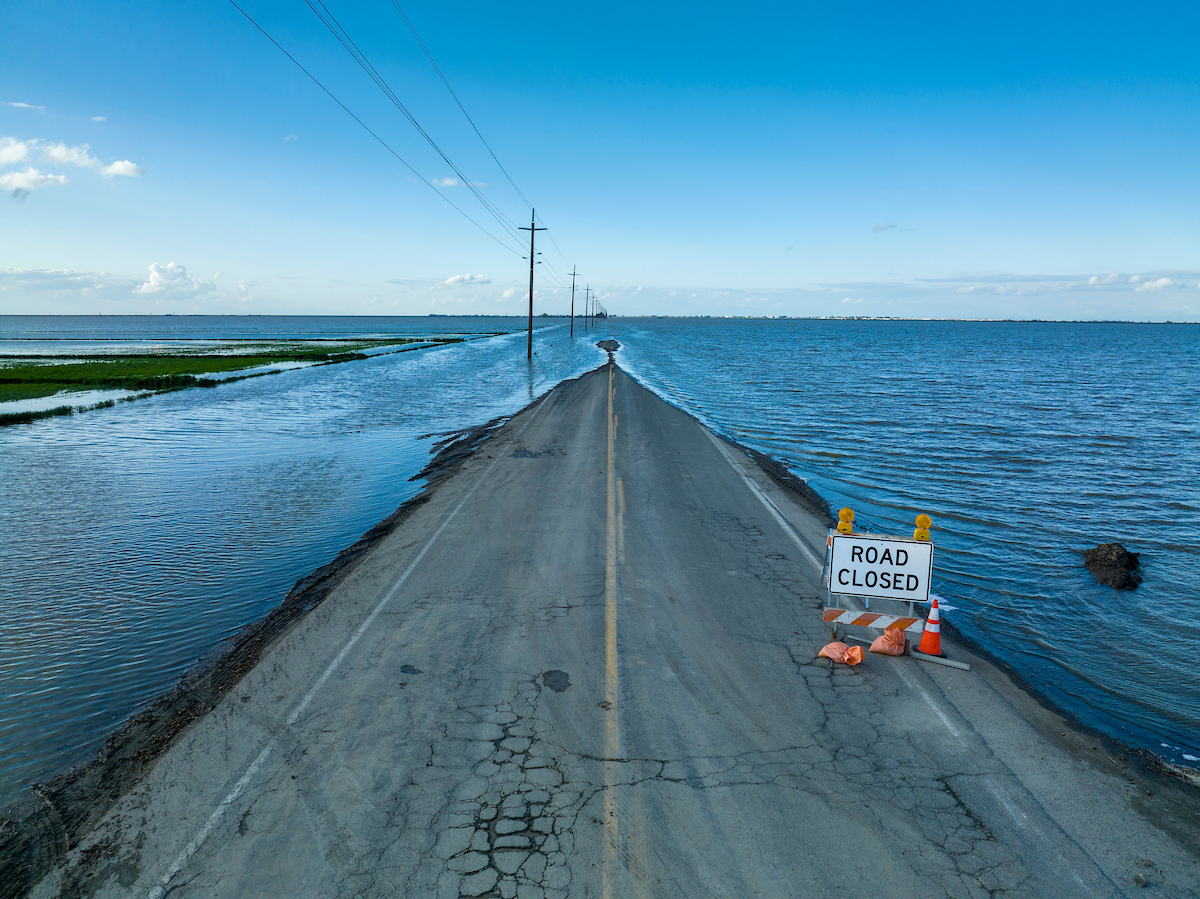
A drone view of floodwaters from the March storms have cut across 6th Avenue south of Corcoran, in Kings County, California. The floodwaters are reforming Tulare Lake, once the largest freshwater lake west of the Mississippi River, Tulare Lake was largely drained in the late 19th and early 20th centuries.
SACRAMENTO, Calif. – Climate disasters, from wildfires to frequent floods, have accelerated in recent years – emphasizing the importance of being prepared and planning ahead for extreme weather events. That is why for California Flood Preparedness Week, which runs from October 18 through October 25, the California Department of Water Resources (DWR) is calling on all Californians to understand the risk posed by flooding and how to respond during an emergency.
“As California experiences increasingly intense storms driven by our changing climate, the risk of severe flooding continues to grow,” said DWR Director Karla Nemeth. “Public safety depends on all of us being prepared. Flooding can happen suddenly, so every Californian should take steps now to stay alert and ready this flood season.”
This is especially true of communities that live downstream of burn scars from recent fires, which can dramatically increase the risk of mud and landslides several years after a fire. Last year, Californians saw firsthand how quickly flood threats can materialize. Following the destructive Eaton and Palisades fires, incoming winter storms threatened downstream communities with increased risk of flash floods and debris flows. Efforts by DWR and partner agencies culminated in the successful deployment of over 115 miles of watershed protection materials and mudslide and debris flood prevention materials over the course of just four weeks.
California is facing new challenges this flood season with federal reductions in services at partner agencies that provide critical forecasts like the California Nevada River Forecasting Center and the National Weather Service. In an effort to be as prepared as possible, staff from DWR’s flood operations section are proactively coordinating with emergency response agencies across the state through 14 regional meetings to discuss resources, flood mitigation strategies and conduct emergency exercises. DWR has also pre-positioned flood fight materials, including over 4.3 million sandbags and 191 flood fight material containers across the state for quick deployment if needed.
“Every fall, DWR works to make sure our state and local communities are ready to respond to major flood threats,” said Laura Hollender, DWR deputy director of flood management and dam safety. “By staging resources across the state, training local first responders and building close regional coordination to prepare for the flood season, DWR is doing our part to make sure local and state responders are ready for flood emergencies. Now it’s time for Californians to do their part by making sure they are listening to local officials and are prepared for local flood threats.”
Recent research by DWR shows that as California experiences larger and more extreme shifts from droughts to floods, the largest flood flows on California rivers could dramatically increase. Further, the risk from flooding is also expected to increase this century due to an increase in storms that hold more moisture, resulting in larger flood flows on major rivers.
Mitigating these risks will require the adoption of the latest science and water management techniques, including expansion of Forecast Informed Reservoir Operations to ensure California can maximize the flood protection and water supply benefits of our state’s reservoirs. The state has also made continued investments to improve public safety and prepare communities for future flooding. Since 2012, DWR has awarded $45 million in flood emergency response grants to improve local flood emergency response and to increase public safety, and provided $50.4 million through the Floodplain Management, Protection, and Risk Awareness Grant Program to communities across the state.
Are You Flood Ready?
More than seven million California residents are at risk of flooding, and many don’t realize it. Flooding can occur throughout the state, from rural to urban areas, in valley and desert communities, in mountain regions, and along the coast. Every California county has received a flood-related emergency declaration in the past 20 years. Flooding can also happen at any time of year and can even occur during drought years.
Communities that are downslope of recent wildfires are also especially prone to flash floods and debris slides, with landscapes impacted by wildfires taking up to five years to recover. To prepare for flooding, all Californians should follow three basic steps:
Be aware of your risk – know whether your home is downslope of a burn area or in a floodplain; pay attention to weather forecasts; listen to local authorities.
Be prepared – always have an emergency evacuation kit ready; be prepared to evacuate early; have a plan for where you will go in an emergency and what to do with your pets.
Take action – subscribe to your local emergency providers to get updated information. Visit the National Weather Service webpage to get updated weather information for your community. If local authorities issue an evacuation order, do not delay, follow local guidelines for evacuation and never attempt to drive through a flooded roadway.
For information on how you can prepare your household for flood emergencies, visit https://www.ready.gov/kit.
For more information on finding your flood risk, visit https://myhazards.caloes.ca.gov/.
For information on obtaining flood insurance, visit https://www.floodsmart.gov/.
Contact:
Jason Ince, Information Officer, Department of Water Resources
(916) 820-8138 | media@water.ca.gov
